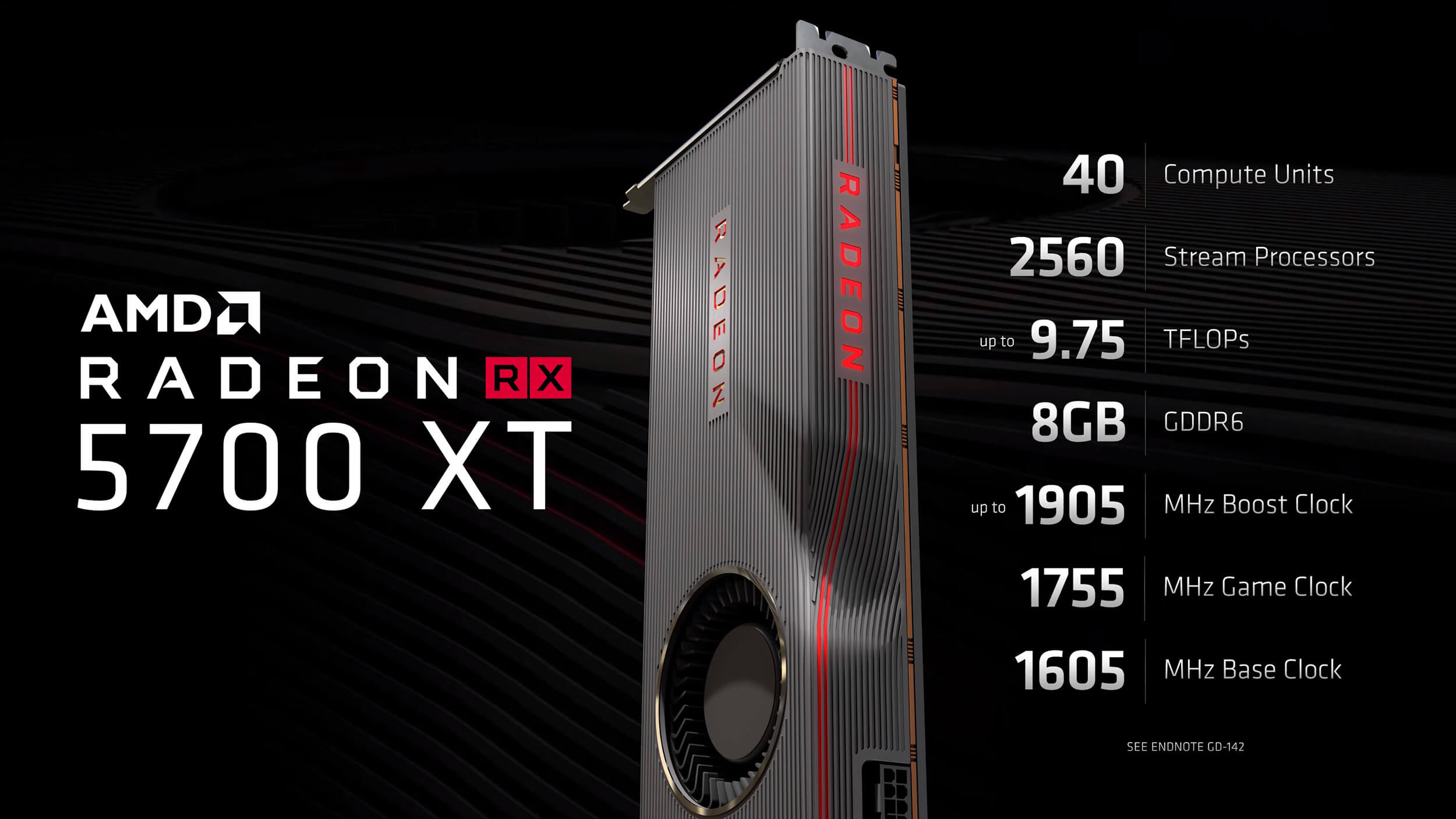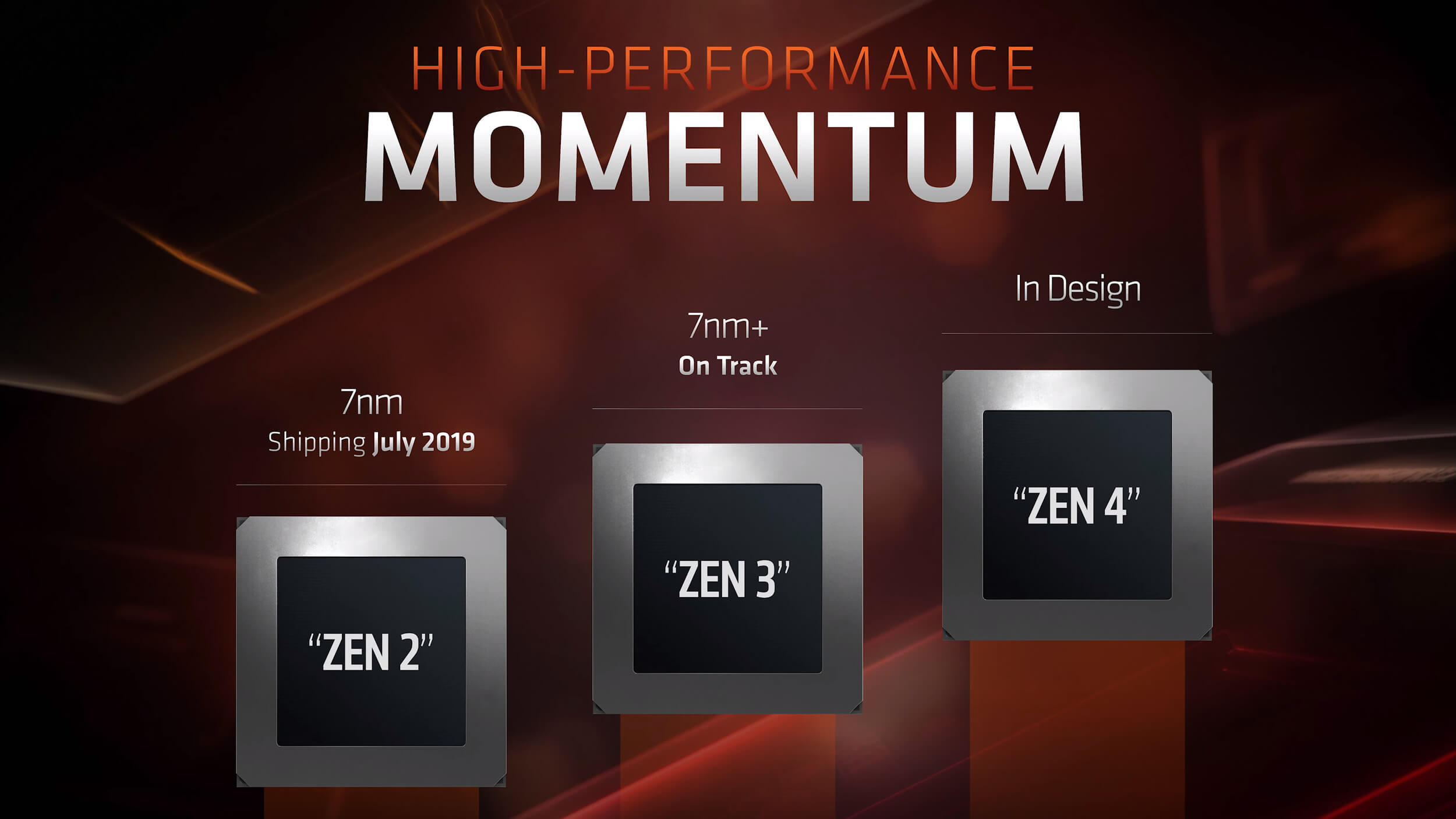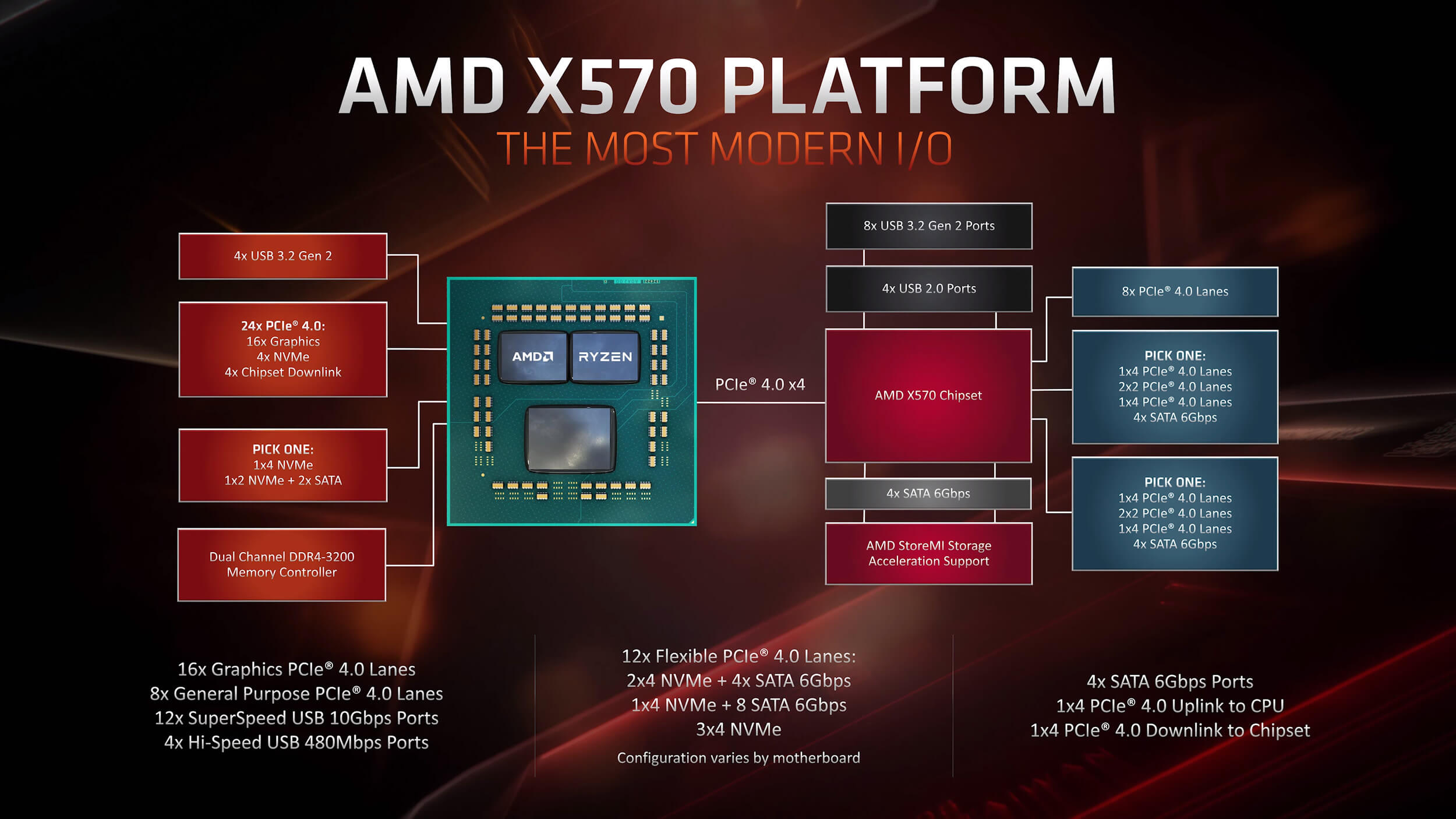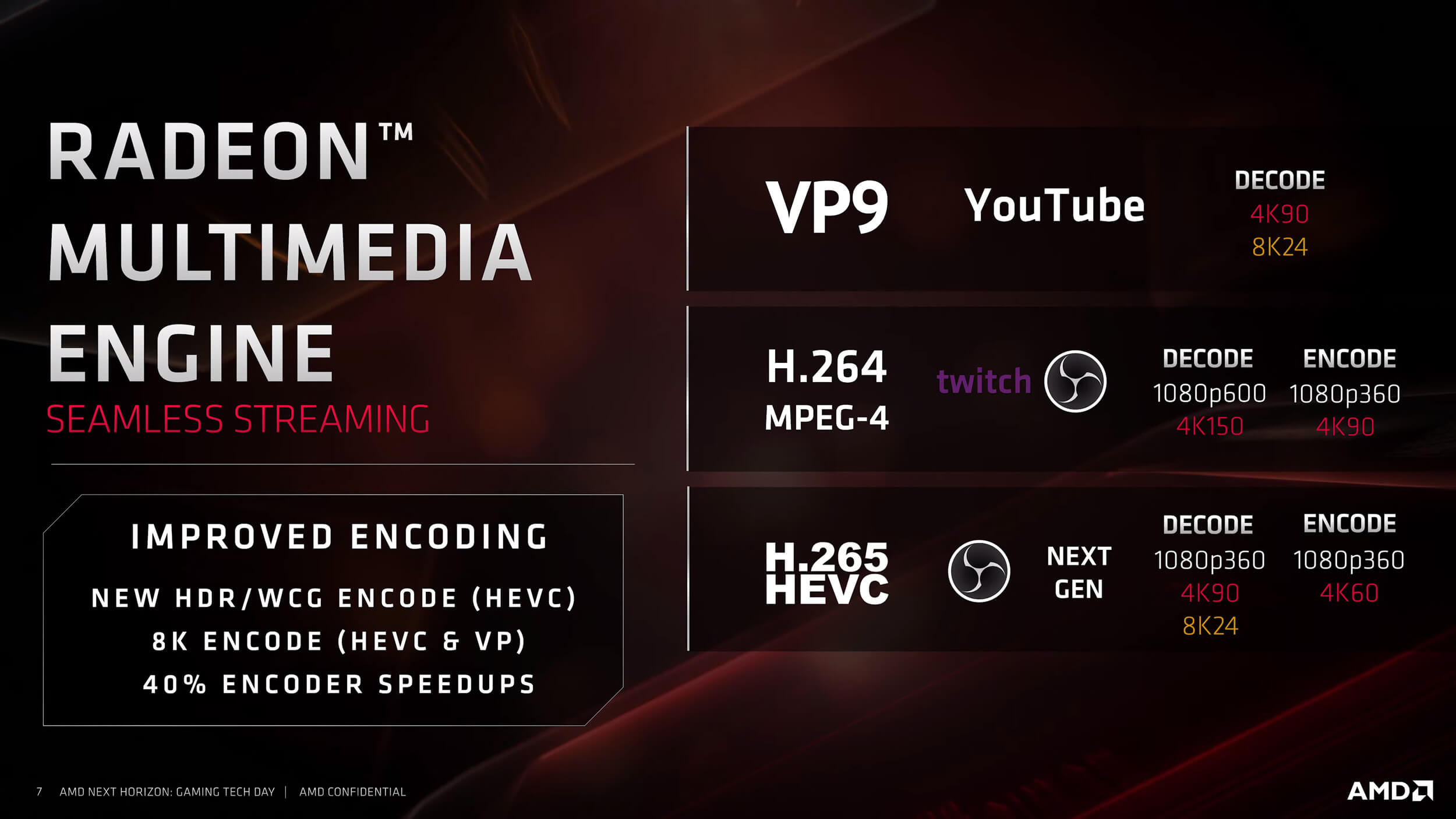What just happened? AMD during its E3 2019 keynote rounded out its Ryzen 3000 family with the introduction of what it's calling the world's first 16-core gaming CPU. We also gleaned details about two Navi-based GPUs, the Radeon RX 5700 XT and the Radeon RX 5700, as well as more information about Zen 2 and RDNA graphics.
The Ryzen 9 3950X is a 16-core / 32-thread chip sporting a base clock of 3.5GHz, a 4.7GHz Boost clock, 72MB of total cache and a TDP of 105W. Many (ourselves included) expected AMD to postpone the launch of its 16-core chip until 2020 but clearly, the chipmaker had other plans. Look for it to ship this September and set you back $749.

AMD additionally shared further information about Zen 2. Thanks to double the amount of L3 cache and lower memory latency, you can expect up to 21 percent higher performance in 1080p gaming.
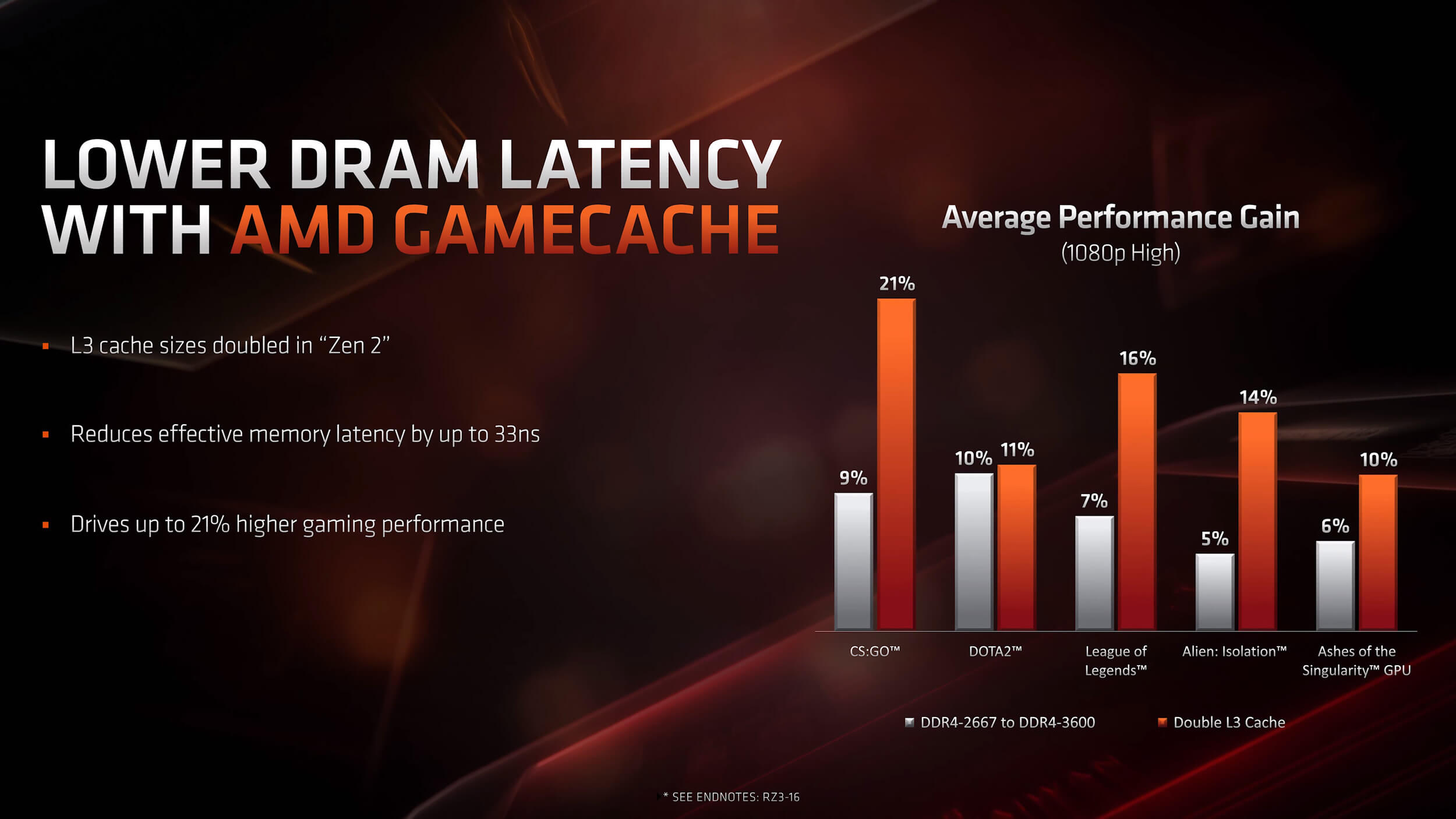
According to AMD's own testing, the Ryzen 9 3900X is roughly on par with Intel's Core i9-9900K in 1080p gaming but comes out ahead in creative-focused tests like Cinebench R20 and Adobe Premiere. It's a similar story for the Ryzen 7 3800X versus Intel's Core i7-9700K and the Ryzen 5 3600X against the Core i5-9600K, both in games and creative workloads.
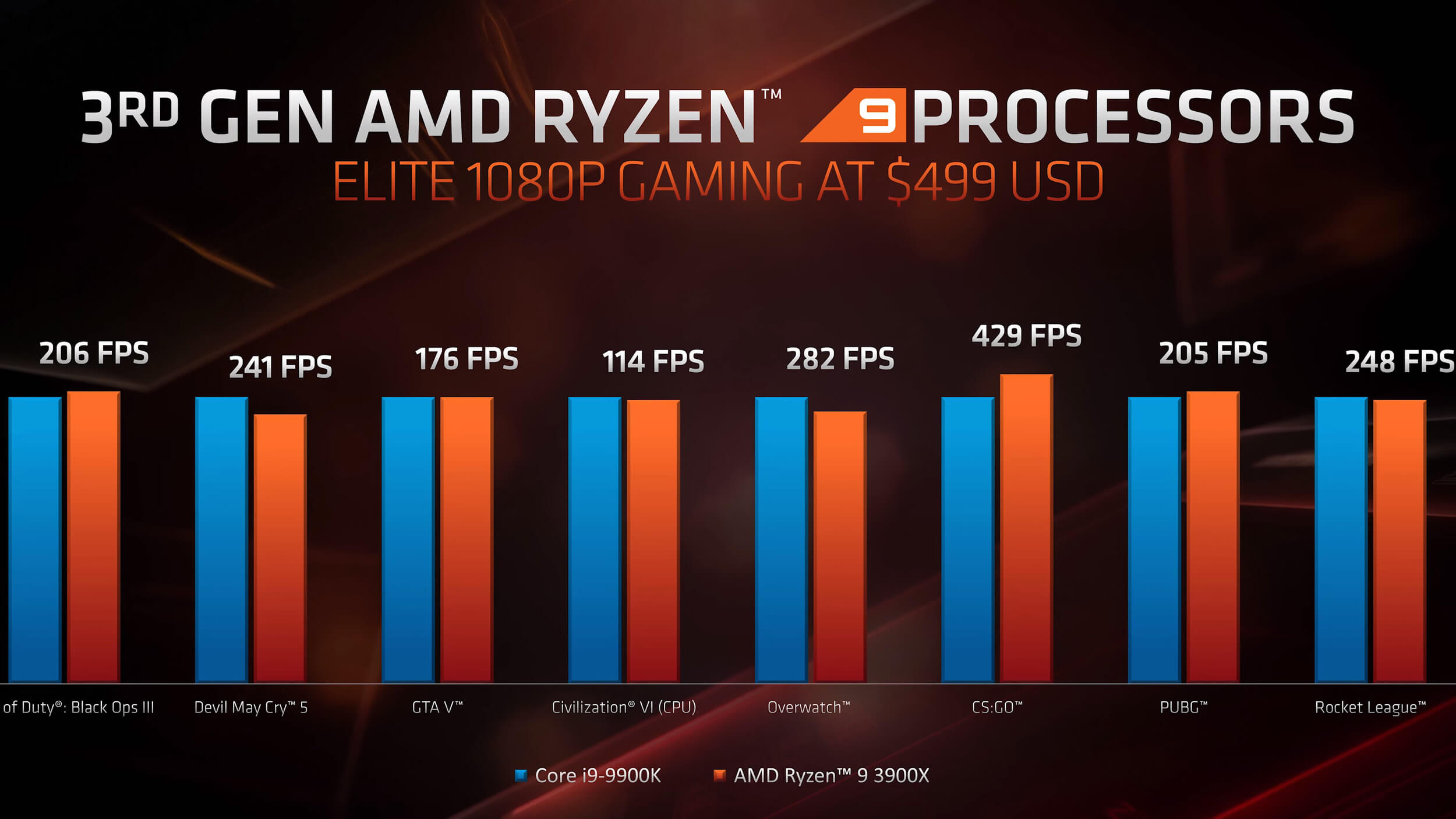
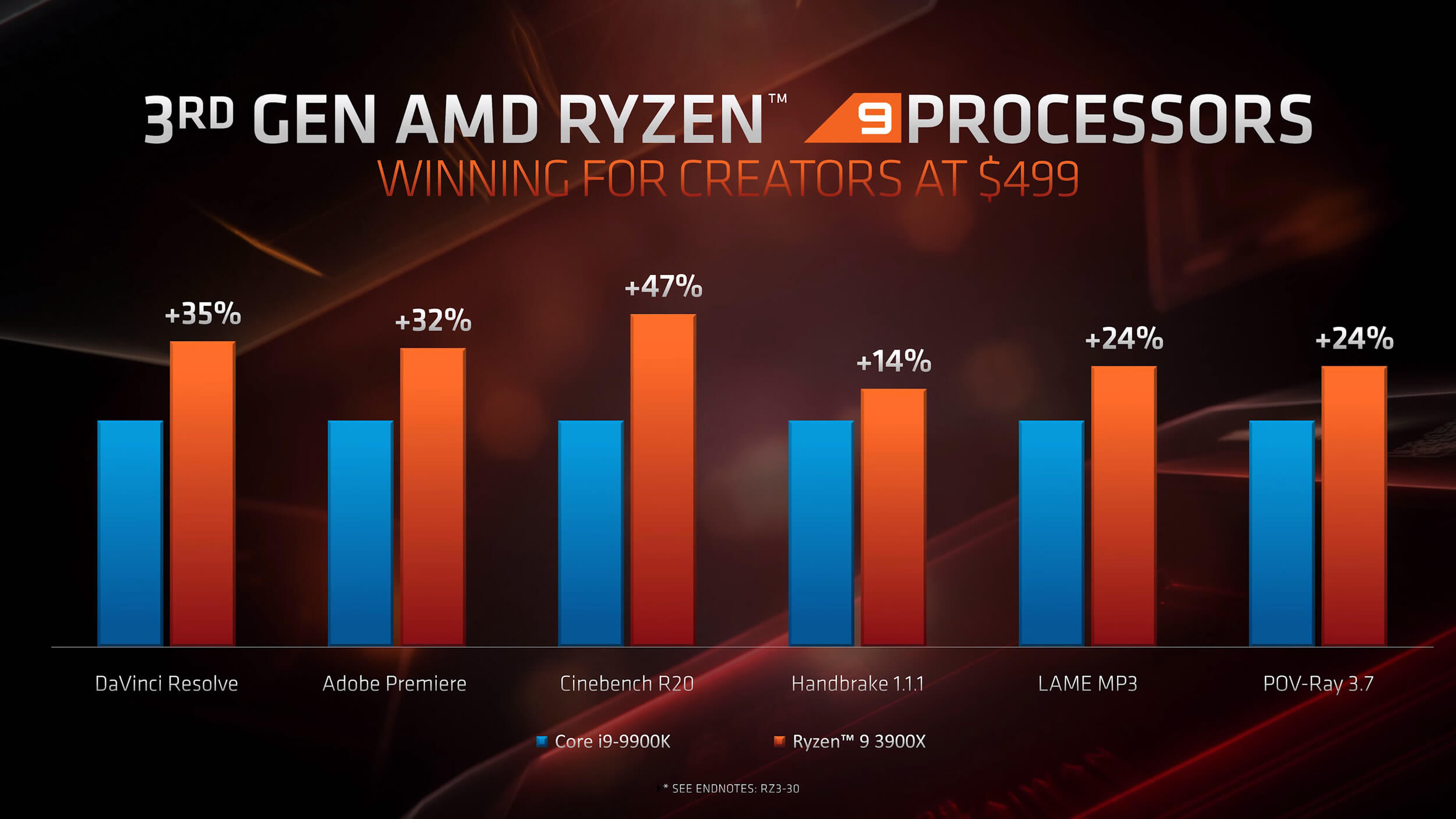
If you're the type that likes squeezing every bit of performance out of your memory subsystem, you'll like what AMD has in store here. DDR4-3200 is the officially supported spec although the company claims it has hit DDR4-5100 on air thanks to its new memory controller design. The sweet spot for performance, however, will reportedly be DDR4-3733 due to the Infinity Fabric tying to the memory clock at a ratio of 1:1 up to this point. Your workload will largely dictate which memory configuration is best.
Early adopters will also be happy to know that the Windows 10 May 2019 update is optimized for Zen, delivering better topology awareness for the CCX design. AMD said users can expect up to a 15 percent performance improvement just from the Windows update. AMD further revealed that all 3rd-gen Ryzen 7 and Ryzen 9 CPUs come with the premium AMD Wraith Prism Cooler which features built-in Razer Chroma lighting.

Moving on to graphics, AMD on Monday announced the Radeon RX 5700 series which includes the RX 5700 XT and the RX 5700. The faster of the two cards, the Radeon RX 5700 XT features 40 compute units and 2,560 stream processors which is good for 9.75 TFLOPs of performance. You also get up to a 1,905MHz Boost Clock and a Game Clock of 1,755MHz which is the speed at which AMD expects the card to run at in typical gaming scenarios.

Stepping down a rung, we've got the Radeon RX 5700 with 36 compute units and 2,304 stream processors for up to 7.95 TFLOPs of performance. The Boost and Game Clocks are also down, to 1,725MHz and 1,625MHz, respectively, but the memory configuration, ROPs and texture units are the same as the XT model. TDPs are rated at 225W for the faster XT and 180W for the standard 5700.
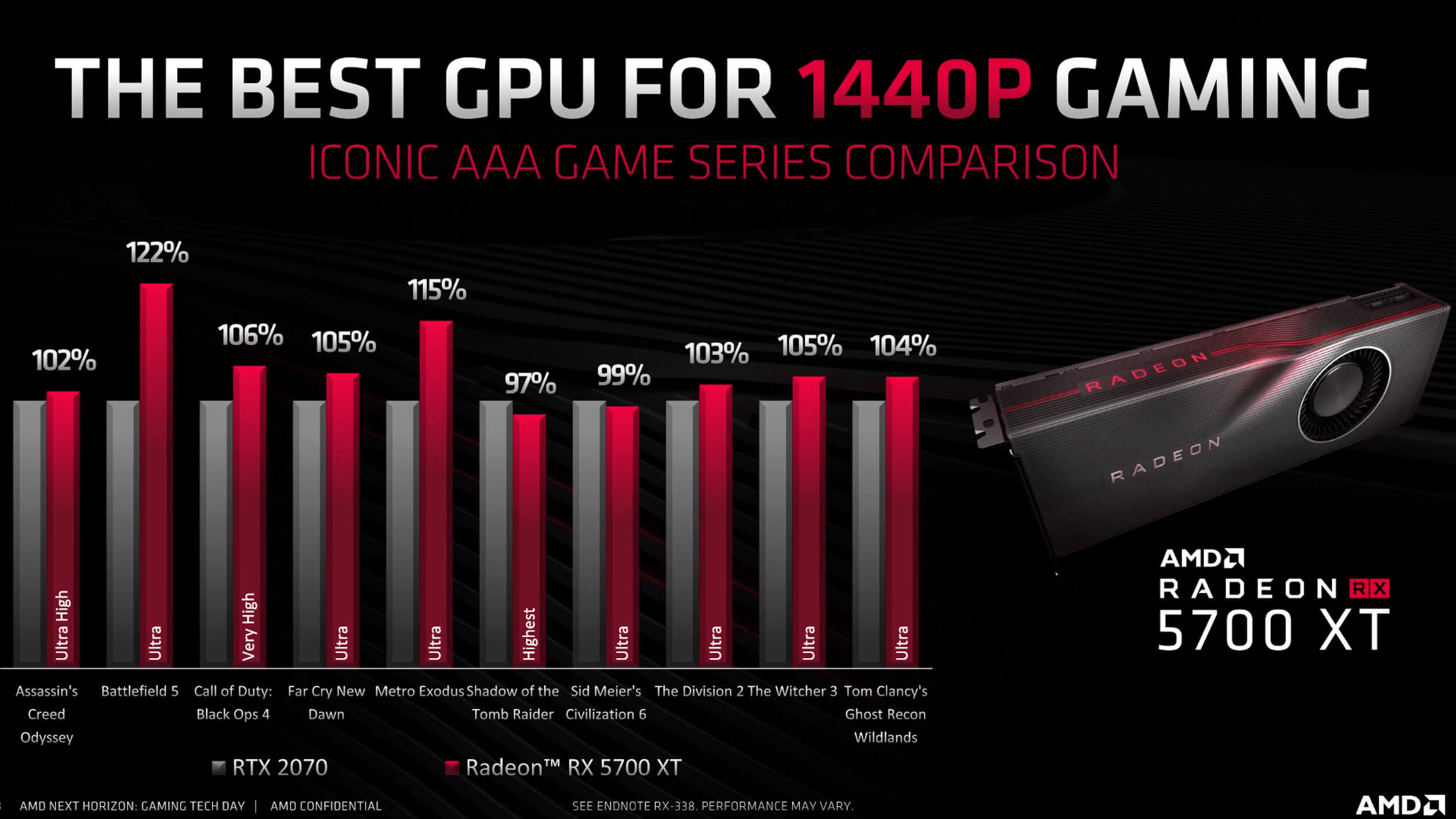
In performance figures provided by AMD (as always, take those with a grain of salt until confirmed independently), the Radeon RX 5700 XT looks to provide a significant uplift compared to the Radeon RX Vega 56. It also comes out ahead of the Nvidia RTX 2070 in most tests although the performance gap is much closer than compared to the Vega 56. Similarly, the RX 5700 is a smidge faster than the RTX 2060 at 1440p settings according to AMD.
Both cards are expected to hit store shelves July 7th, the RX 5700 XT will start at $449 and the RX 5700 is $379.
Zooming out a bit for a more generalized look at Navi, we see that AMD is once again going with blower-style coolers for the reference models. The RX 5700 XT model specifically uses an aluminum shroud and backplate with vapor chamber cooling, an acoustically tuned contour design and graphite thermal interface material.
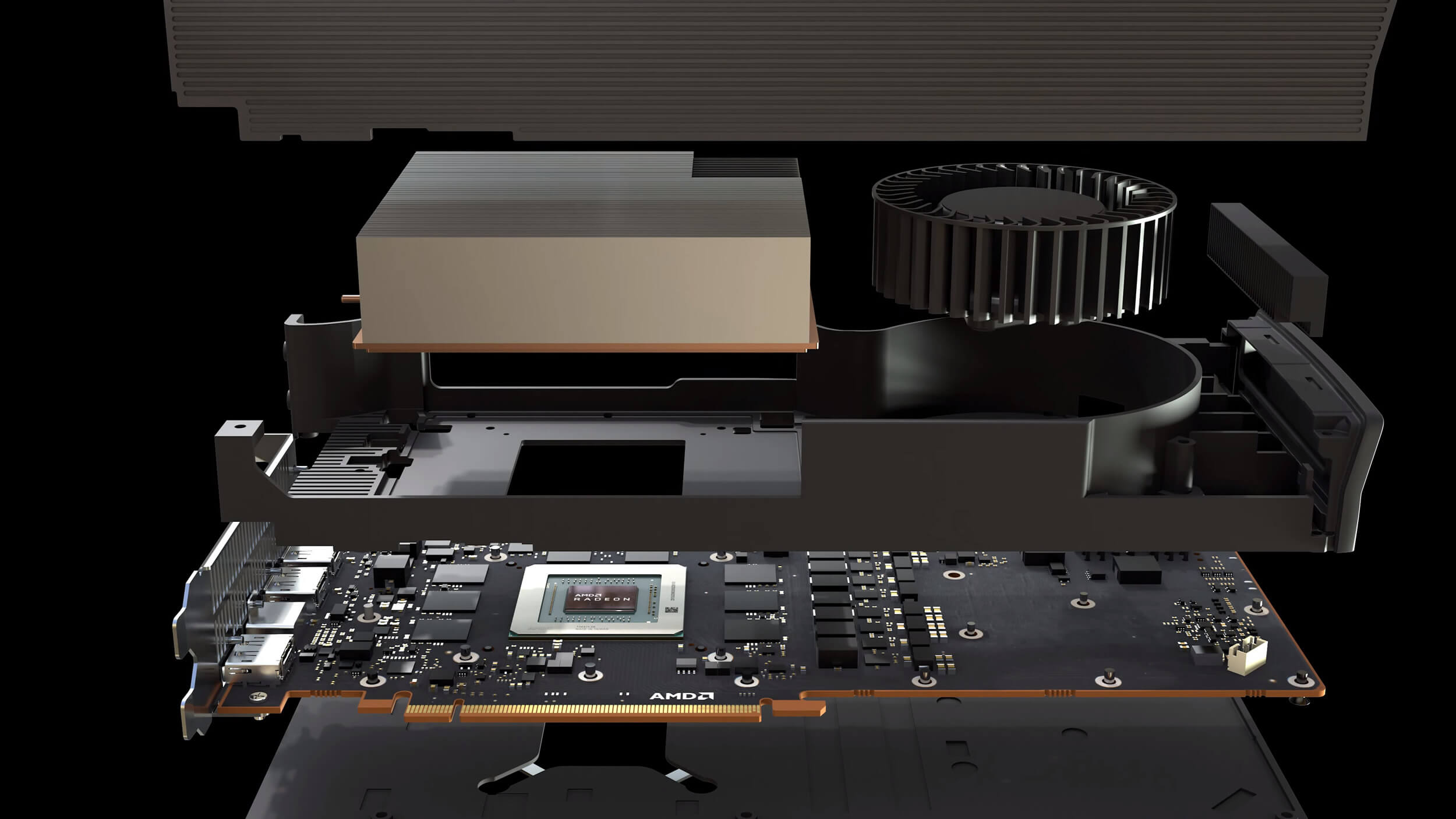

Also of interest is a new Radeon Display Engine with support for Display Stream Compression 1.2a. This supports monitors up to 4K @ 240Hz as well as 4K HDR @ 120Hz and 8K HDR @ 60Hz. Notably, however, the new cards don't support HDMI specification 2.1.
In terms of architectural changes, much of what AMD discussed with Navi is beyond our traditional scope of coverage. If you're into that sort of thing, we'd recommend checking out a site like Anandtech as they usually have detailed, in-depth coverage focused on architecture.
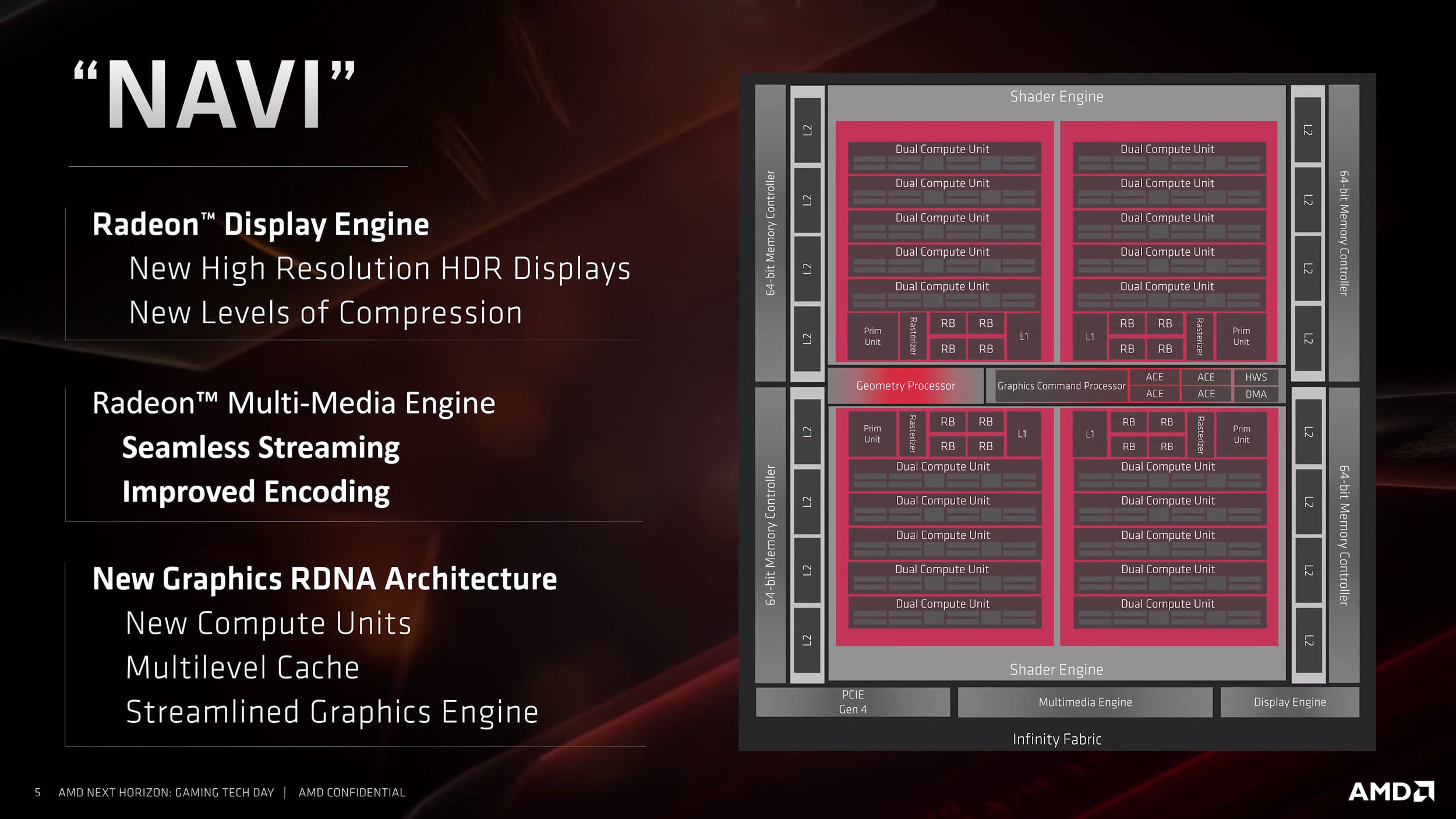
For a broad overview, however, it is worth mentioning that with RDNA, the compute unit has been redesigned for improved performance and efficiency. This means it's not just a slight evolution of Graphics Core Next (CGN) but rather, something new altogether that results in reduced execution latency, better single-thread performance, an improved cache design and better resource pooling.
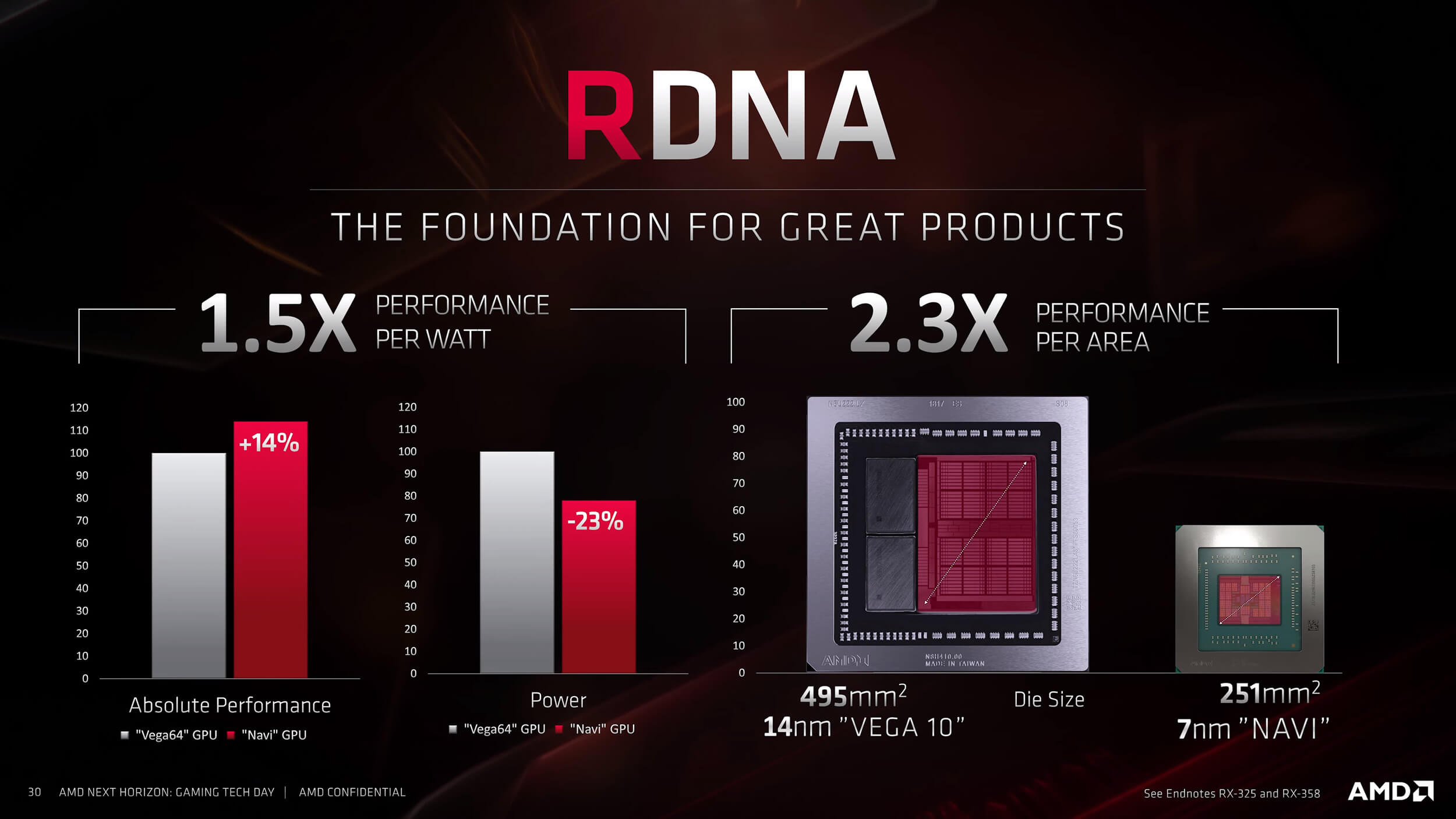
All things considered, AMD said RDNA achieves a 25 percent performance increase per clock compared to GCN. In a same power, same configuration comparison, AMD said the performance gain increases to 50 percent. There's also a 1.5x performance per watt gain compared to Vega 64.
Last but certainly not least is new AMD Radeon Software Adrenaline 2019 Edition version 19.7.1 (whew, that's a mouthful) launching July 7. It boasts a slew of new features including anti-lag tech that aims to improve input-to-display response times and AMD Radeon Image Sharpening, an intelligent sharpening technology that looks far more compelling than Nvidia's DLSS tech.
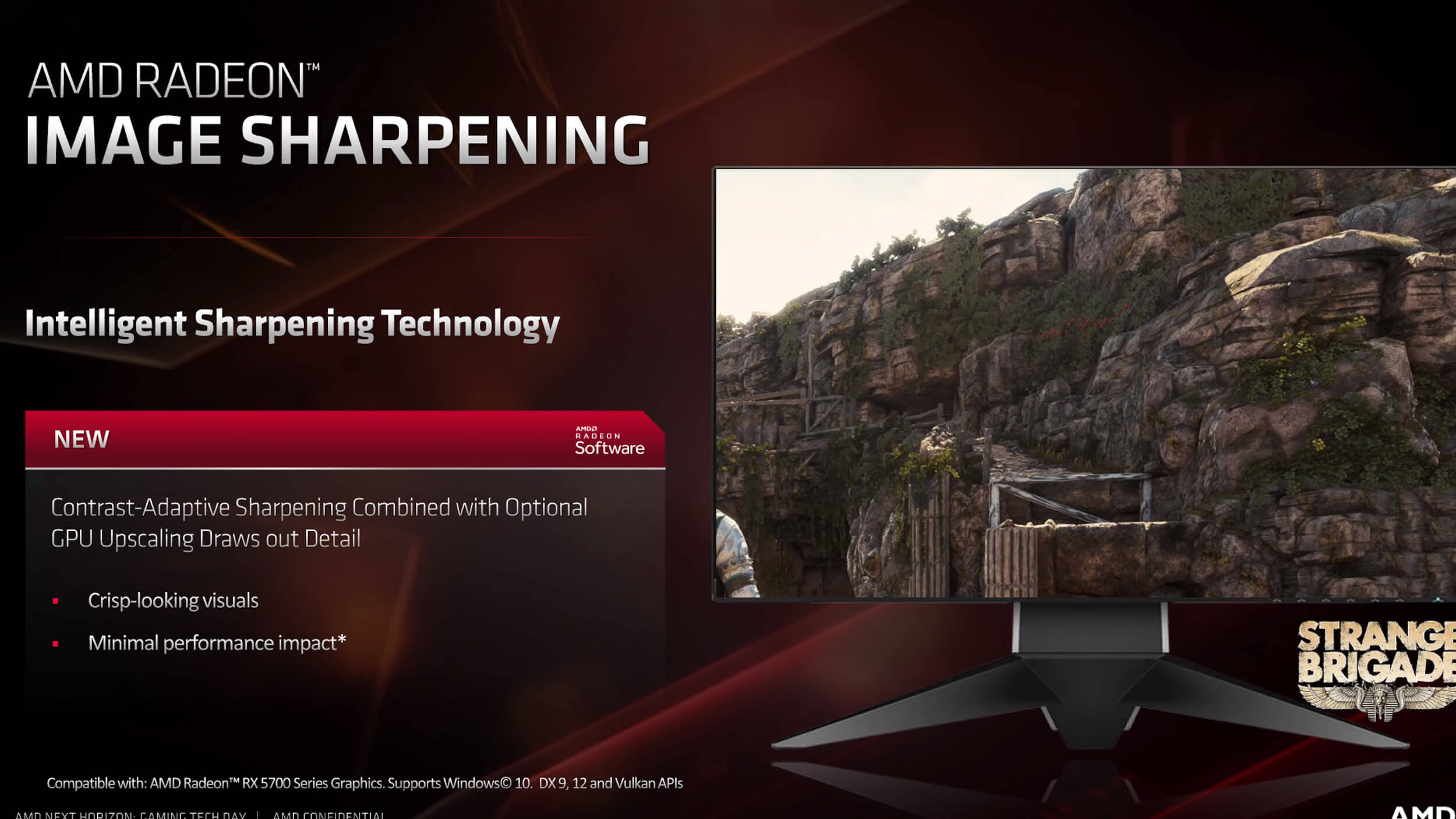
This post-processing effect has little to no performance impact (around one percent) and best yet, supports thousands of new and old games. You will need an RX 5700 series GPU to utilize it, however.
